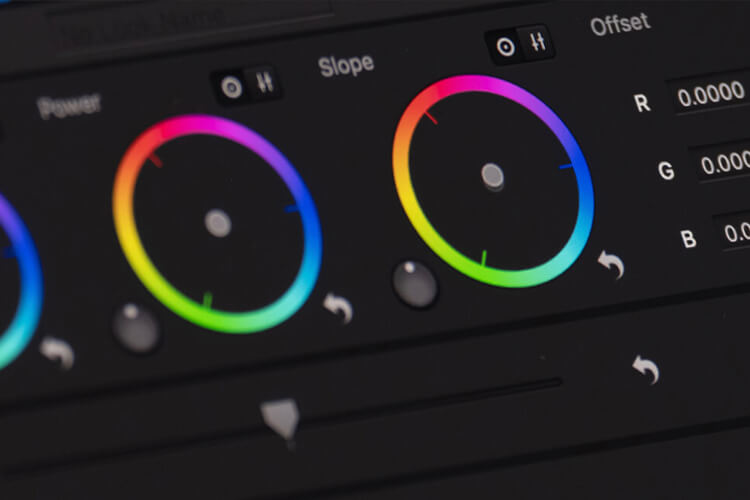The Cinematography of The Thursday Murder Club
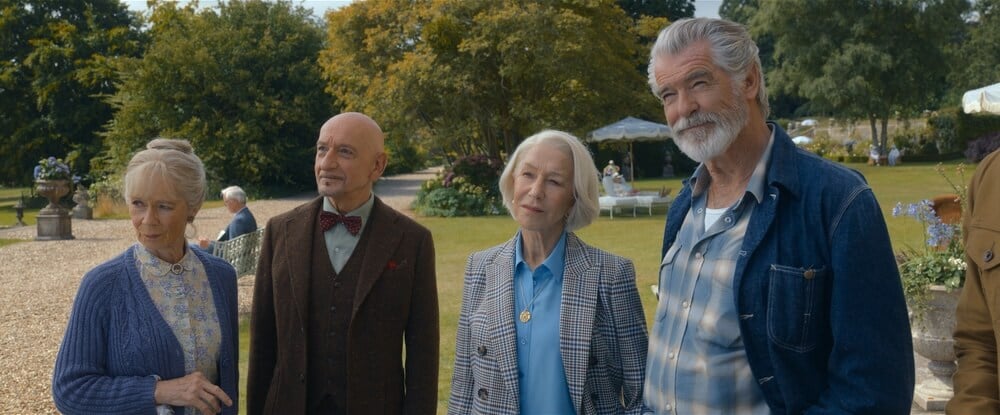
Based on Richard Osman's bestselling novel, the new Netflix feature The Thursday Murder Club follows a lively group of sharp-witted retirees — played by Helen Mirren, Pierce Brosnan, Ben Kingsley and Celia Imrie — whose weekly cold-case hobby takes a surprising turn when they stumble into a real murder investigation. To capture the playful intrigue of this whodunit, director Chris Columbus reteamed with cinematographer Don Burgess ASC. The duo had previously collaborated on the Netflix projects The Christmas Chronicles, which Columbus produced, and its sequel, The Christmas Chronicles: Part Two, which Columbus directed.
With principal photography based in London, Burgess and his crew worked with Panavision London for the production’s camera and lens package, and with Panavision Grip and Remote Systems for grip support. Burgess also reunited with Light Iron supervising colorist Corinne Bogdanowicz for look development and the final color grade, marking their 13th feature collaboration.
We recently caught up with Burgess and Bogdanowicz to discuss the creative and technical puzzle pieces that collectively formed the look and visual language of The Thursday Murder Club.
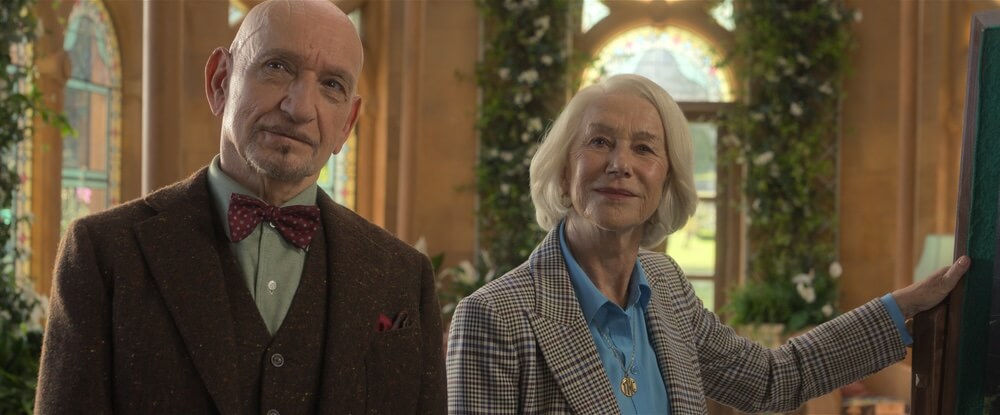
Panavision: When did things start moving forward with The Thursday Murder Club, from your perspective?
Don Burgess ASC: It was probably a year before we ended up making the movie when Chris [Columbus] fell in love with the project and decided to move forward. We then had to wait for the cast to be available. Chris said, ‘We’ve got to have an English cast, and we’ve got to shoot this in England. That's the only way I can see it working.’ The studio agreed, and he was able to make the movie he envisioned.
Chris wanted to shoot in the summer because he felt it was essential for this film. It was actually my first big summer shoot in London, which was great. We shot all around London, starting at a beautiful old mansion before moving onto stages at Shepperton Studios.
For Chris, I think it was a refreshing project, with wonderful actors and real locations. There were no bluescreens, which was something he was excited about. The cast was a lot of fun to work with, and Chris is very enthusiastic and full of energy. He can have so many different things going on in his head at the same time when it comes to making movies. He’s an absolute pleasure to work with.
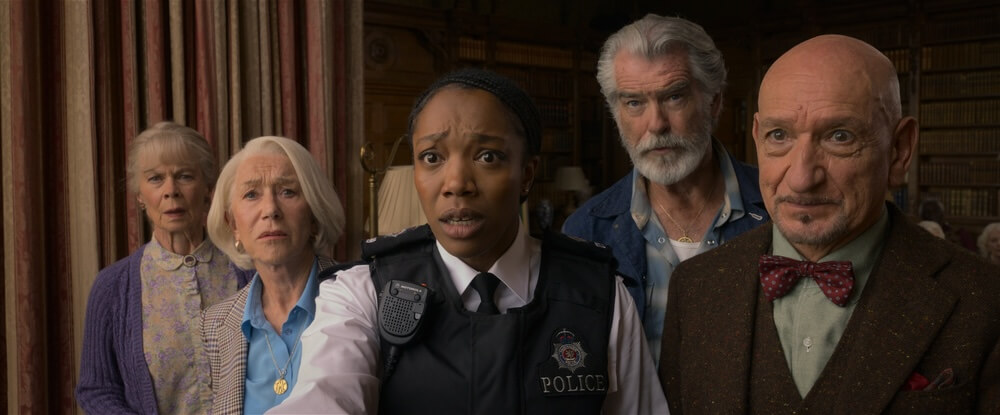
How did you, Chris and your other collaborators begin to establish the look you wanted to create for this story?
Burgess: It’s funny, the one film that Chris had me look at was a very dark, serious story. When I’m given a reference like that, I have to interpret what the director wants me to notice and how it might apply to the project we’re working on. In this case, what Chris really wanted me to see was the way the actors were chiseled out from their environments. They stood out as strong elements within the frame without getting lost in it. That was what he wanted me to take away and bring to this movie.
In the end, it was more of a lighting reference, that strong side-light feel in the way the characters were lit in the scenes. You take those elements, along with the locations and conversations with the director, and eventually you develop the style of lighting and composition the film will carry. You spend a lot of time with the production designer, the director, and later the set decorators, and you establish a color palette and costume design, so everything fits together.
At the beginning, you see the movie in your head when you read the script, but ultimately you need to see the movie that’s in the director’s head so you’re making the same one. I've always found it easy to communicate with Chris about the look of a movie. He's very good at explaining his ideas, and he thoroughly enjoys the process — his excitement is contagious.
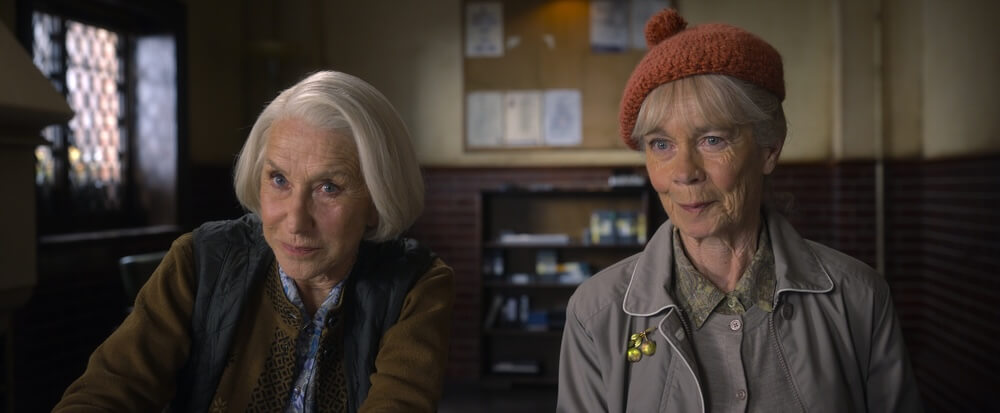
How would you describe the movie’s visual style?
Burgess: We were trying to create the ultimate retirement village — the kind of place we’d all like to end up in. It was summertime in England, so you had lush green forests, beautiful lawns, colorful landscaping, and this amazing old country mansion that had been turned into the retirement community. We were creating an idyllic world where people could go at a certain point in their life.
Visually, we always wanted to keep a rich look to the movie. We didn’t want to light it in a purely comedic way, but rather in a style that carried some edge. The comedy needed to feel natural, drawn from real-life situations instead of slapstick or blatant comedy. Real life is full of both comedy and tragedy, and that’s ultimately what this story is about.
Corinne, how did Chris and Don describe what they envisioned when they began talking with you about the project?
Corinne Bogdanowicz: Like Don said, they wanted a fairly natural look for the movie. The look we created had some warmth and creaminess to the high end, and some slight cooling to the low end. It was a filmic, beautiful, natural feeling to enhance a story with such iconic characters.
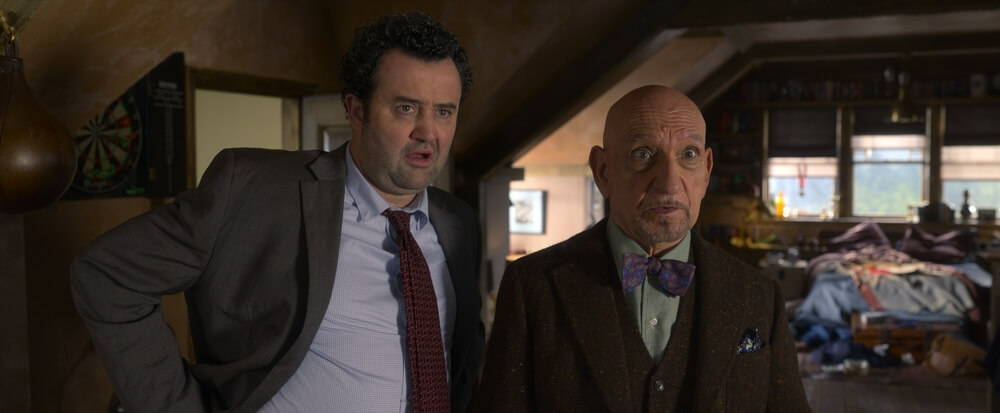
Don, how did you choose the camera and lens package to help you achieve the look you envisioned?
Burgess: I wanted to use the Red Raptor 8K in a format that would give us flexibility in post, so I shot at about 90–95 percent of the sensor and composed a frame inside of that. That was the starting point. From there, it came down to lens selection, and it was between the Primo 70s and the Panaspeeds.
When I started testing, I felt the Panaspeeds had a little softer look to them. The edges have a bit of softening compared to the Primo 70s, which are really sharp edge to edge. The Primos are great, but with this movie I felt that little bit of softness was more appropriate, for the material and for the cast.
When you’re trying to put everything together in prep, these pieces start talking to you at some point. It’s purely a gut feeling that ultimately happens when you’re looking at the material. And hopefully you find that before day one of shooting.
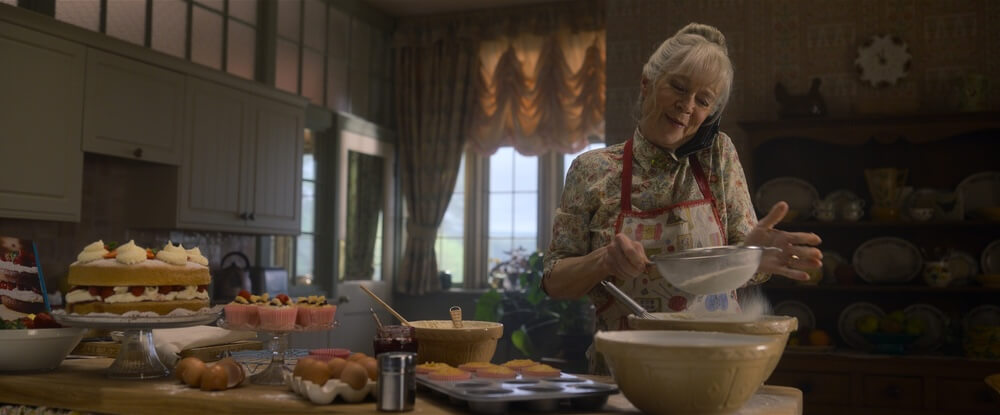
The movie opens with a brief flashback showing a cold case the Thursday Murder Club is investigating. How did you and Chris establish the distinct look of that flashback?
Burgess: Chris wanted a black-and-white sequence to open the movie. We tested color film, black-and-white film and a digital version of the same scene. We went through the options, and I’ll say this: For a pure black-and-white image, it's still tough to beat film. Ultimately, we opted to shoot it digitally so Chris would have the flexibility in case he wanted to choose a color version. In the end, he went for the black-and-white look, and shooting it digitally and then finessing the black-and-white image in the DI worked great.
Bogdanowicz: I made a few LUTs for that sequence so they could decide how they wanted to view it in editorial. One look was black-and-white, and another was a very cool, desaturated look. Ultimately Chris decided to start with black-and-white digitally, and switch to the cooler, color version when we pop into a photo of the crime scene.
Don, how do you and Chris work together on set in terms of blocking and shot design?
Burgess: It starts with finding the actual spots where you’re going to shoot on location. Chris will say, ‘I kind of see it like this, I want to see this, and I think this connects with that.’ So, it begins broadly, deciding which direction the master should face, and from there you work your way into what you think is going to happen. Ultimately, it gets decided when he blocks with his actors. He’s very good at that because he’s a writer-director. He understands story and character motivation, and he has a way of working with actors that makes them feel comfortable with the direction he’s giving.
He’s also a great listener. He believes in collaboration, in bringing the actors into a room and making the scene work. We usually go in with a solid idea of what we’re going to do, which allows me to prep and light as much as possible before rehearsal, and then refine it on the day. In this movie, we had large ensemble scenes, but I never remember us having to flip things around because they didn’t work. Chris has that ability to see it, communicate it, and then make it better once the actors are in rehearsal.
He’s very traditional in that he prefers to focus on one camera, which I think is great. You design these beautiful conceptual shots that really tell the story and then shoot the coverage. I’d sometimes add a second or third camera for specific pieces, but his priority was always to focus on one character at a time and get the performance he wanted. That can save you a lot of time at the end of the day. Bringing out a lot of cameras doesn’t always help — it can create headaches and compromise shots. There’s usually only one perfect angle, and once you start bringing more cameras to accommodate others, it doesn’t always work.

How did your conversations with Corinne start for this movie?
Burgess: I always try to bring Corinne in early. We’ve done so many movies together that I feel very comfortable working with her. She’s very good and extremely fast — I don’t know how she works so quickly, especially when it comes to solving problems. Recently, for my next movie, I shot some tests in New Jersey and screened them while I was in London; Corinne was in Hollywood driving the projector, and within minutes, we had everything exactly where we wanted.
For this movie, contrast was really driving the image. The color was what I’d call ‘normal,’ but the contrast became the point of testing — building up the highlights and falloff so the image felt stronger. That process gave us the guidebook for what the dailies would look like, what we’d be tracking toward in post production, and ultimately what the movie would look like. We always try to get it to a place where the director, the production designer and I are all happy. That way every department can see how their work, from wardrobe to set colors, will be translated on screen. The goal is to keep the image balanced, not too bright or too dark, so it supports the story and the audience sees what they need to.
Bogdanowicz: We created a show LUT from some test images before production started, which gave us a foundation going into dailies. To echo what Don said, we’ve worked together for many years, and we’ve developed a pretty smooth way of collaborating. He trusts me to do a pass and set some looks after we’ve talked, and then he comes in for final changes. I’d also worked with Chris previously, so there was trust there as well. Both Don and Chris are very clear about what they want, which made the color correction a really enjoyable experience.
Burgess: What we generally do is go through the movie and set one shot in every scene as the guide for where I think we are. Then Corinne will go through the whole cut, and when I come back in, we’ll start at the beginning and go through every shot together. If I’ve done my job right, a lot of it is just balancing shots so they match and making the transitions as seamless as possible so nothing distracts the audience. The goal is always to keep viewers in the zone — the old ‘willing suspension of disbelief.’
Corinne and I have been working together for a long time, and it’s been terrific. When you get comfortable with someone, it makes a big difference. The job is never easy, but when you’re working with people who are really good at what they do, the process becomes easier, more enjoyable, and the end result is better. With Corinne, I’m always happy with how things turn out.
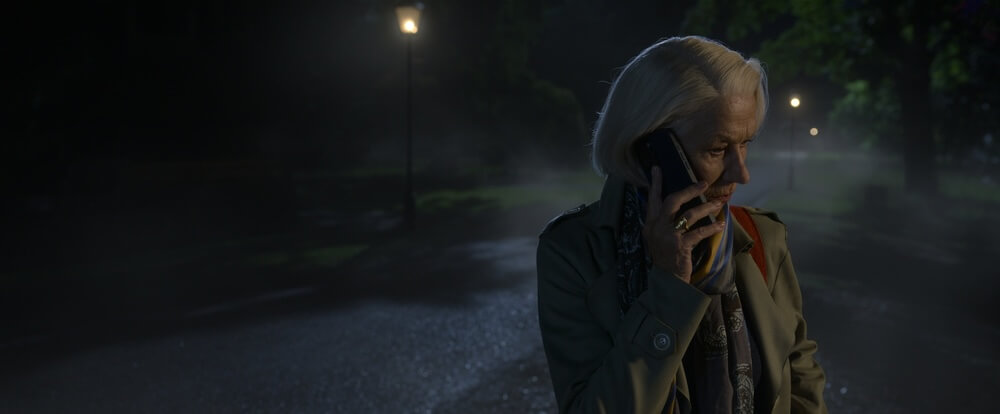
Corinne, what were the main tools or approaches you used in the grade to help fine-tune the look of the movie?
Bogdanowicz: I graded in Baselight, and we used some shaping and color separation to really draw your eye to the important parts of the frame. With a natural look, the way the characters stand out — or not — becomes a really important element of the grade. Don and Chris were both very involved in the color correction and were present in the facility, which made the process even more collaborative.
Don, how has your collaboration with Chris evolved over the projects you’ve done together?
Burgess: It's been great. I had worked on some projects with his production company years ago, and at one point I shot some tests for him. We met, hit it off, and I always thought he was a terrific guy. But it wasn't until The Christmas Chronicles that we had a chance to work closely together, with him producing and staying very hands-on. We enjoyed that collaboration, and when they decided to make another Christmas Chronicles with Chris directing, he asked me to shoot it. That was the first full movie we did together, we both really enjoyed it, and that’s when our journey really began. He’s great to work with, and I look forward to making another movie with him.
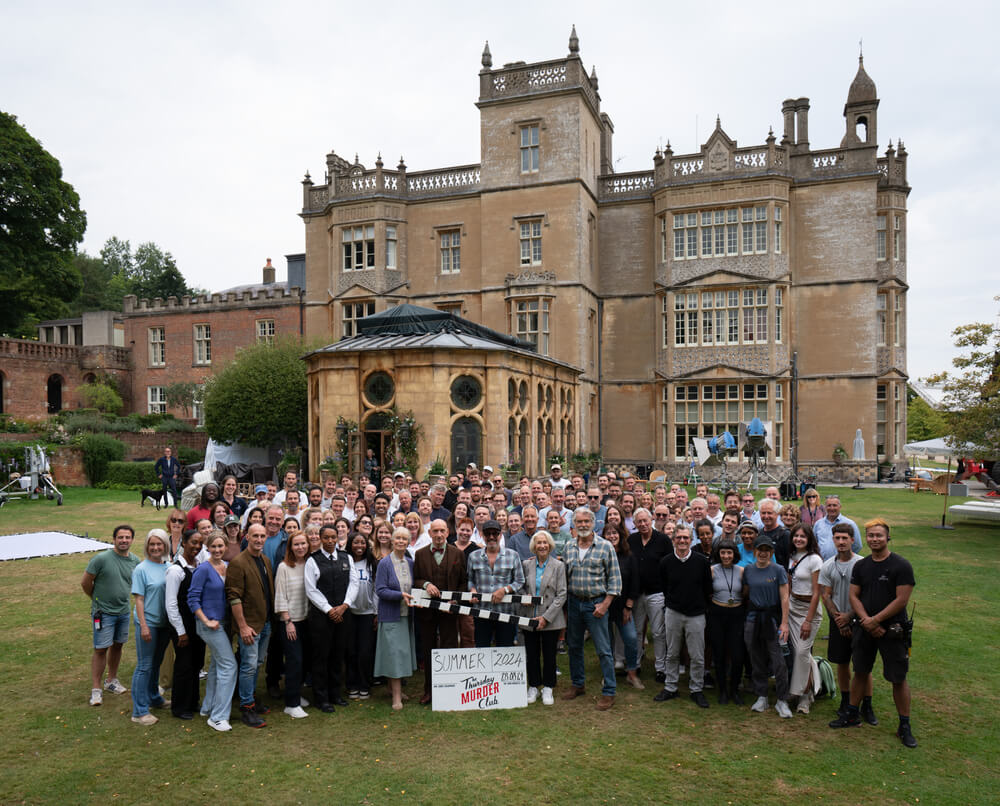
Cast and crew celebrate the wrap of principal photography for The Thursday Murder Club. Cinematographer Don Burgess ASC stands in the front row, sixth from right. (Photo by Giles Keyte, courtesy of Netflix.)
Watch The Thursday Murder Club now, streaming only on Netflix.
All images courtesy of Netflix.

